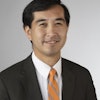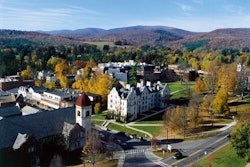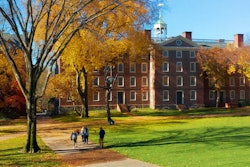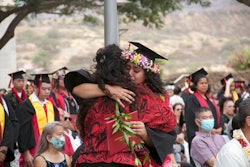Washington, D.C. — In order to live up to the designation of being an Asian-American and Native American Pacific Islander Serving Institution, or an AANAPISI, a college or university must instill the idea into its campus ethos.
That was the heart of the message delivered Wednesday by DeAnza College President Brian Murphy at the third annual Asian & Pacific Islander American Scholarship Fund Higher Education Summit.
“The AANAPISI designation isn’t some sidelight. It isn’t the next cool thing that goes away after the grant goes away,” Murphy said during the summit, held at the Ronald Reagan Building & International Trade Center.
“It’s who we are,” Murphy said of his institution’s status as an AANAPISI. “We are also at the same time Hispanic serving, immigrant serving, poor serving. We have to call that out.”
“We can’t just have our public face be, ‘We’re the totally cool transfer place,’” Murphy said in reference to how despite the fact that his community college enjoys relatively high transfer rates, that overall success overshadows the challenges of various subgroups who matriculate to four-year colleges at lower-than-average rates.
In many ways, how the success of the aggregate conceals these challenges dominated the summit, where speakers lambasted what they described as the stubbornly persistent “model minority” myth that obfuscates the varied educational stories of diverse subgroups within the Asian-American and Pacific Islander, or AAPI, population.
The criticism of the model minority stereotype is by no means new, particularly at the Asian & Pacific Islander American Scholarship Fund’s higher education summit, where the point has been hammered home since the summit’s inaugural year.
It might have almost seemed redundant Wednesday were it not for a new Pew Research Center study titled “The Rise of Asian Americans,” which speakers said perpetuated the model minority myth even further when it was released a day before the summit began.
Dr. Robert Teranishi, associate professor of higher education at New York University, quoted the opening passage of the study to bolster his longstanding criticism that the model minority myth continues to be a scourge.
“Asian Americans are the highest-income, best-educated and fastest-growing racial group in the United States,” Teranishi said as he quoted from the Pew report. “They are more satisfied than the general public with their lives, finances and the direction of the country.”
“This is problematic,” Teranishi said, now speaking in his own words and criticizing the Pew report. “This is the old narrative, not the new narrative.”
In a panel discussion titled, “The Changing Face of the Nation,” Teranishi shared statistics that show how certain subgroups within the Asian American & Pacific Islander population — such as those of Cambodian and Hmong — don’t fare as well educationally as Asians in America do on the whole.
And for Guamanian, native Hawaiian and Samoans, educational attainment rates among the current generation of young adults has fallen below that of the previous generation, Teranishi’s analysis of statistics showed.
“This is not the American way,” Teranishi said. “This goes against our whole idea about what America represents.
“In this country we aspire to have our younger generations gain access to more opportunity and a better trajectory than the prior generation.”
To better understand and hopefully reverse certain negative statistical trends within the AAPI population, the Asian & Pacific Islander American Scholarship Fund, or APIASF, announced a new three-year, $2 million research effort known as PEER, an acronym for Partnership for Equity in Education through Research.
The project is being launched in collaboration with the National Commission on Asian American and Pacific Islander Research in Education (CARE), for which Teranishi serves as principal investigator.
PEER was launched with funds from The Kresge Foundation, USA Funds, and the Walmart Foundation.
The research project comes at a time when the AAPI population is expected to reach 40 million by 2050 — up from the current 17.3 million — in a trend that will inevitably lead to greater AAPI college enrollment.
With that in mind, PEER seeks to collect and track data to identify promising practices and to implement targeted interventions aimed at helping AANAPISIs graduate more AAPI students.
Findings will be shared with the higher education community in general and the AANAPISI community in particular. The PEER project will collaborate with three AANAPISIs: De Anza College, City College of San Francisco, and South Seattle Community College.
AANAPISIs deserve greater attention, Teranishi said, because they represent only 3 percent of America’s colleges and universities but enroll over half a million AAPI students and award 47.3 and 25.3 percent of all AAPI associate’s and bachelor’s degrees, respectively, nationally.
“These data demonstrate why support for AANAPISI’s are so important,” Teranishi said.
Murphy, of DeAnza College, said being an AANAPISI involves being very deliberate about serving Asian American and Pacific Islander students and students from other groups in a way that empowers them to become more engaged in their communities.
He said it also means examining cultural competencies among faculty, faculty members’ ability to engage AAPI students and providing personalized attention.
Murphy also sounded a critical tone when discussing the Obama Administration’s goal to make the United States the most-college educated nation with the most competitive workforce in the world.
“There isn’t a single student at DeAnza College that doesn’t know they need to get a job,” Murphy said. “What they’re worried about is whether there’s a democracy that has room for them.”





















